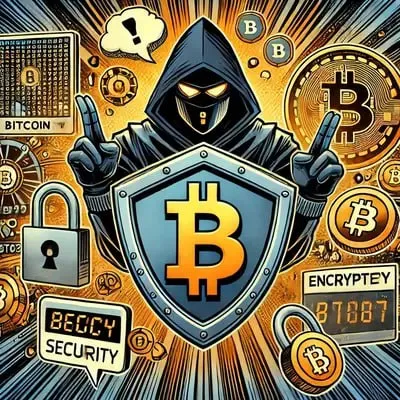Best Practices For Staying Safe in The Crypto Industry: Lessons From Notable Hacks.

The growing adoption of cryptocurrency brings new opportunities and significant risks. As more people invest, the frequency of cyber thefts and hacks has also increased, making robust security practices essential for protecting digital assets. This guide examines common threats and provides practical steps to safeguard your investments from malicious actors.
The Ever-Present Threat of Crypto Attacks
In 2023, the cryptocurrency market lost approximately $1.7 billion to hackers and fraudulent activities. While this is a substantial sum, it represents a significant decrease from the $3.7 billion stolen in 2022. Common attack vectors include exploiting vulnerable smart contracts, compromising private keys through phishing, and circumventing multi-signature protocols. These incidents highlight the ongoing security challenges facing both individuals and institutions in the crypto space.
Recent Major Crypto Hacks
The year 2024 has already seen several high-profile security breaches, demonstrating that threats are constantly evolving.
DMM Bitcoin Hack
In May 2024, the Japanese exchange DMM Bitcoin suffered a major attack, losing 4,502 BTC valued at over $305 million. The attackers initiated an unauthorized transfer from the exchange's wallet. DMM Bitcoin has since announced plans to raise funds to fully reimburse all affected users.
PlayDapp Hack
In February 2024, the blockchain gaming platform PlayDapp was compromised. Attackers gained access to a private key, which allowed them to mint and steal PLA tokens worth approximately $290 million across two separate transactions.
Gala Games Hack
A security incident in May 2024 at Gala Games resulted from a compromised private key with minting authority. The attacker minted 5 billion GALA tokens, valued at over $200 million, and sold a portion before the wallet address was frozen and the remaining tokens were burned.
Landmark Crypto Heists from Previous Years
Poly Network (2021)
Poly Network, a cross-chain decentralized finance platform, experienced a massive exploit resulting in the theft of over $600 million in various crypto assets. In an unusual turn of events, the attacker, dubbed 'Mr. White Hat,' began returning the funds within 24 hours and ultimately returned nearly all of the stolen assets.
Ronin Network (2022)
The Ronin bridge, an Ethereum sidechain for the game Axie Infinity, was hacked for approximately $624 million. The attack was orchestrated by the Lazarus Group, which used a fake job offer to trick a senior engineer into opening a malicious PDF. This allowed the attackers to gain control of the validator nodes needed to approve fraudulent withdrawals.
FTX (2022)
Shortly after filing for bankruptcy, the FTX exchange suffered a hack where an unknown party drained $477 million in assets. The attacker quickly moved the funds across various decentralized exchanges and blockchains to obscure their trail.
Mt. Gox (2011–2014)
One of the earliest and most infamous crypto heists involved the Mt. Gox exchange. Over several years, hackers slowly siphoned hundreds of thousands of bitcoins, culminating in a loss of nearly $500 million at the time. The collapse of the exchange had a long-lasting impact on the industry and led to years of legal proceedings.
The Evolving Threat of Social Engineering
While technical vulnerabilities in smart contracts or networks are a major concern, many of the largest crypto heists succeed because of human error. Social engineering attacks, which manipulate individuals into divulging confidential information or performing actions they shouldn't, are increasingly common and effective.
Phishing is the most prevalent form of social engineering. Attackers create fake websites, emails, or direct messages that mimic legitimate platforms to trick users into entering their private keys, seed phrases, or approving malicious transactions. As seen in the Ronin Network hack, these schemes can be highly sophisticated, involving fake job offers and elaborate impersonations.
This highlights that even the most technically secure systems, such as cold storage wallets with multiple signatories, can be vulnerable if the individuals controlling them are deceived. The security of digital assets depends as much on user vigilance and operational security as it does on the underlying technology.
How You Can Stay Safe from Crypto Cyberattacks
Protecting your digital assets requires a proactive approach to security. Follow these essential practices to minimize your risk.
Use Secure and Reputable Platforms
Before using a wallet provider or exchange, research its security architecture and track record. Prioritize platforms that are licensed and regulated where applicable, as they are typically held to higher security and compliance standards.
Enable Multi-Factor Authentication (MFA)
Poor access control is a common vulnerability. Always enable MFA on your accounts. This adds a critical layer of security, requiring multiple forms of verification before access is granted, making it much harder for unauthorized users to compromise your account.
Beware of Phishing Scams
Be skeptical of unsolicited links, emails, and messages. Hackers often create convincing fake websites to steal your credentials. Always verify URLs and navigate to platforms directly through saved bookmarks or by typing the address yourself. Never share your private keys or seed phrase with anyone.
Use Cold Storage
For long-term holdings, use a hardware wallet (cold storage). These devices store your private keys offline, making them immune to online hacking attempts. Only connect your hardware wallet to a trusted computer when making transactions.
Consider Multi-Signature Wallets
A multi-signature (multisig) wallet requires approval from multiple parties to authorize a transaction. This eliminates the single point of failure that exists with a single-signature wallet, providing enhanced security against theft.
Safeguard Your Seed Phrase Offline
Your seed phrase is the master key to your wallet. Store it offline in a secure, physical location, such as a safe. Never store it on a computer or cloud service where it could be exposed to malware or hackers.
Monitor Your Transactions
Regularly review your account activity. Most blockchains are public, allowing you to monitor transactions. Familiarize yourself with blockchain explorers so you can verify transaction details and spot any suspicious activity early.
Features of a Secure Exchange Platform
When choosing a platform, look for one that prioritizes security through a multi-layered approach. For example, Switchere is an exchange that integrates several key security features.
One important feature is regulatory compliance. Platforms licensed in jurisdictions like the European Union are obligated to follow strict laws regarding asset protection, Anti-Money Laundering (AML), and Know Your Customer (KYC) procedures. This framework helps prevent fraud.
Consider the platform's custody model. Non-custodial exchanges allow you to transact directly from your personal wallet, minimizing the risk associated with storing funds on the exchange itself.
Advanced encryption and secure transaction protocols are also critical. Look for features like two-factor authentication (2FA) and 3D Secure for payment processing, which add extra layers of verification to protect your account and transactions.
Finally, reliable 24/7 customer support is essential. In the event of an issue, prompt and effective assistance can help resolve problems quickly and provide peace of mind.
Conclusion
The security of cryptocurrency assets is a shared responsibility. While platforms must implement robust protective measures, users must also adopt vigilant practices. By choosing secure exchanges, using tools like cold storage and multi-factor authentication, and staying alert to threats like phishing, you can significantly reduce your risk in the digital asset ecosystem.
Please be advised that this article is not investment advice. You should act at your own risk and, if necessary, seek professional advice before making any investment decisions.

 Roman Klochko
Roman Klochko